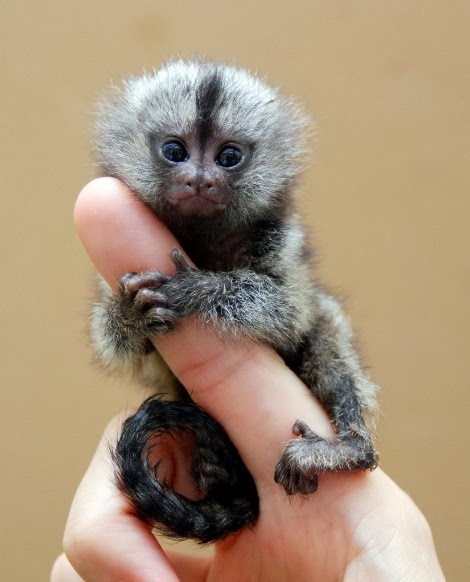Pygmy Marmoset Monkey, The pygmy marmoset monkey, often called the “finger monkey” due to its tiny size, is one of the most fascinating creatures in the animal kingdom. Native to the rainforests of South America, particularly the Amazon Basin, this miniature primate captivates animal lovers with its small stature, expressive eyes, and agile movements. Let’s explore the world of the pygmy marmoset monkey and learn what makes it so unique.
What is a Pygmy Marmoset Monkey?
The pygmy marmoset monkey (Cebuella pygmaea) is the smallest monkey species in the world, weighing just about 100 to 140 grams (3.5 to 5 ounces) and measuring around 12 to 15 cm (5 to 6 inches) in body length, with a tail that can be longer than its body. Despite its small size, this primate is incredibly active, often leaping great distances between branches in its forest habitat.
Habitat and Distribution
Pygmy marmoset monkeys are found in the tropical rainforests of countries like Brazil, Colombia, Ecuador, Peru, and Bolivia. They live high in the tree canopies near rivers and streams, making them difficult to spot in the wild. Their natural habitat provides them with an abundance of insects, fruits, and tree sap—an essential part of their diet.
Diet and Feeding Behavior
One of the most interesting traits of the pygmy marmoset monkey is its diet. These monkeys are “gummivores,” which means they feed primarily on tree sap and gum. They use their sharp lower teeth to gnaw holes into tree bark, allowing the sap to ooze out. Insects and small fruits also make up a portion of their diet, providing additional nutrients.
Social Life and Communication
Pygmy marmosets are social animals that live in small groups typically consisting of 2 to 9 members. These groups usually include a breeding pair and their offspring. Communication among these monkeys includes a range of vocalizations, from high-pitched whistles to clicks and trills, as well as visual signals and scent markings.
Reproduction and Lifespan
The female pygmy marmoset monkey gives birth to twins twice a year on average. The gestation period lasts about 130–150 days. Interestingly, the male plays a significant role in caring for the babies, carrying them on his back and helping with grooming and feeding.
In the wild, pygmy marmoset monkeys can live up to 12 years, while in captivity, they may live slightly longer with proper care.
Conservation Status
Although the pygmy marmoset monkey is not currently considered endangered, it faces threats from habitat destruction, deforestation, and the illegal pet trade. The exotic appeal of these tiny monkeys makes them targets for capture, but they often do not adapt well to life in captivity due to their specific dietary and social needs.
Final Thoughts
The pygmy marmoset monkey is a remarkable species that continues to intrigue scientists and wildlife enthusiasts alike. Its small size, unique feeding habits, and complex social behavior make it a valuable part of the biodiversity in South America’s rainforests. Protecting its habitat and discouraging illegal pet ownership are essential steps in ensuring this miniature marvel continues to thrive for generations to come.
You Might Also Like These:
is it legal to own a monkey in california
baby marmosets monkeys for sale in florida


